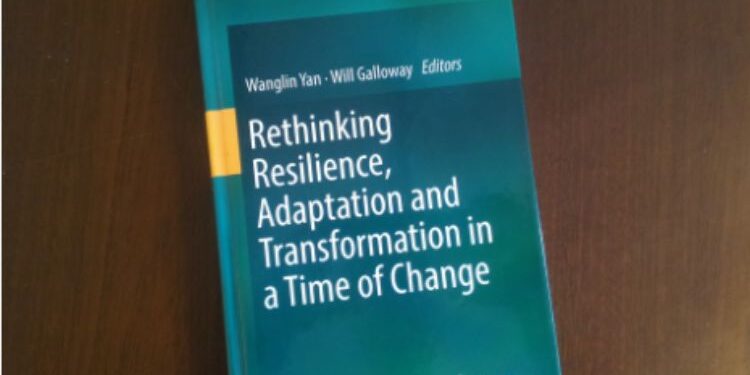A recreation hiker named Gary Hinge was reported missing in July 2017 after hiking to a cabin in the Great Basin Desert (Nevada). He left his housemate and sister Simon Rodgers and set out from Ruth.
He never returned. His truck was later found at a campground, along with his severed hand holding a camera. Several clues were discovered, including fingerprints that did not match Hinge and a trail of barefoot footprints.
The film is based on a real-life case
Unlike other films that are inspired by horror fiction, Dutch Marich’s Horror in the High Desert is based on a true-life case of an outdoor enthusiast who disappeared in the Nevada desert. The real-life disappearance of Kenny Veach, who went missing while searching for a cave in 2014, served as inspiration for the film. Veach was a popular hiker who had become a vlogger, and he had created videos about his adventures in the wilderness. Veach’s disappearance led to widespread speculation that he might have been involved in illegal activities or had come into contact with aliens.
In the movie, Gary Hinge is an outdoors and survival enthusiast who goes on multiple-day wilderness excursions with the bare minimum of supplies. He is an expert at survival, and he has a strong interest in model trains. His housemate, Simon Rodgers, worries about him when he takes these trips. He often leaves his dog at home while he is gone and doesn’t tell his sister where he’s going.
When Gary’s truck was found abandoned in the desert, police searched for clues. They uncovered several fingerprints on the truck, but none of them matched Gary’s. They also discovered a set of barefoot footprints that didn’t match any known person. Eventually, they decided to focus on his social media accounts.
Soon, Gary’s family and friends were convinced that he had been kidnapped by aliens or witches. Despite a massive months-long search, no trace of him was ever found. However, some strange events later in the film prompted the police to begin investigating the case again.
As the film progresses, we learn that Gary was attacked by a deformed monstrous stranger. The film also shows his last moments – from a video he recorded himself. This is a pretty creepy little film, and it has all the usual tics of a mockumentary (excessive breathless statements, over-dramatic build-ups) but it still manages to scare viewers with its inventive twists and tense verisimilitude. In fact, it’s one of the better examples of this genre in recent memory. In addition, the film features some genuinely creepy moments (weird ululating cries in the dark) and a short “found footage” segment that delivers the shocking conclusion.
The film is based on a YouTube vlogger
Horror in the High Desert is a faux-documentary that follows hiker/survivalist Gary Hinge. He disappears after hiking to a remote section of the Nevada desert and having a disturbing experience with a strange cabin in the middle of nowhere. His disappearance is a huge mystery and is investigated by a reporter, a private investigator, and his sister. The film uses talking heads, drone footage, fictional found footage, and a YouTube vlog to build up the story.
While writer-director Dutch Marich did not make a point of saying his film was inspired by the disappearance of real-life hiker Kenny Veach, the parallels are unmistakable. Veach was also an outdoor enthusiast who posted vlogs online about his hiking adventures. He was also a frequent contributor to survival-oriented blogs and forums. Like Gary, Veach had many followers and was pressured by fans to revisit a mysterious cave he had discovered earlier. He disappeared after a visit to this location and his family searched for him in the desert.
The film opens with Gary Hinge discussing his last adventure, which was a three-day hike in the Great Basin Desert near New Ruth, Nevada. He had encountered a cabin in the middle of the wilderness and was disturbed by a bizarre phenomenon that made him feel as though he was being watched and followed. He decided to leave the cabin and move on, but he was soon back in the area.
He was recording an infrared video when he spotted something that looked like a person moving on the ground. He was frightened and ran away, but returned to record more footage. He then heard a chanting noise and felt as though someone was watching him. The sound was distorted and seemed to come from the ground.
Eventually, he realized that it was a human-like creature with horrific deformities. The creature then attacked him. Gary recorded the attack on his camera, but it was dark and hard to see. Nevertheless, the footage is creepy and leaves a lasting impression on the viewer.
The film is a little on the slow side as it spends a lot of time building up the mystery with talking head interviews and drone footage. But the shaky camera work and the use of blurry and burnt infrared footage adds to the creepiness of the film. It also features some disorienting music and a sense of impending doom.
The film is based on a cave
Horror in the High Desert is a faux documentary-styled film about outdoor enthusiast Gary Hinge’s (Eric Mencis) mysterious disappearance in Nevada’s high desert. The movie combines fictional talking head interviews and beautiful landscape footage with the found-footage narrative style popularized by The Blair Witch Project to create an artificial world of fear for its audience. It explores the psychological effects of film on its audiences and compares it to Plato’s Allegory of the Cave.
The film begins with endearing insights about the character of Gary from his roommates and sister, which immediately draws viewers’ attention and sympathy. The film then explains that he is an avid hiker who often travels to remote areas for survival quests. During one such expedition, he reported that he felt an eerie vibe when approaching a cabin in the distance. However, his claim was met with online ridicule, forcing him to return to the area and investigate.
Upon entering the cave, Gary encounters a disfigured man with severe physical deformities. The man stalks him, and Gary is forced to fight for his life. The scene climaxes with a brutal attack by the creature. Gary’s hand-held camera captures the entire incident.
As the team progresses through the cave, they discover more of these atrocious winged monsters. The group is forced to battle yawning underground chasms, powerful underwater currents and each other. They must also decide whether they can trust each other or not, as they begin to learn more about the members of their team.
While the plot of this film is based on true events, it was actually inspired by another real-life person named Kenny Veach. This person was a YouTube vlogger who claimed to have discovered a cave that looked exactly like the one in this film. He even posted videos on his channel about his visit to the cave. The film is a perfect example of the kind of social media influence that can cause people to become obsessed with something and even go to extreme lengths to prove it. While the film has flaws, it is still a compelling story about a young man who goes on a journey to find a mythical monster and ends up losing his life in the process.
The film is based on a zombie
The film is based on a true story that happened in Nevada and features a YouTube vlogger who disappears while hiking. Gary Hinge’s disappearance inspired the filmmakers to make a movie about him. They used recovered footage from his last hike, which helped to create a sense of unease. The film also made use of Nevada’s sinister and unsettling reputation as a source for conspiracies, which added to the movie’s atmosphere of dread and suspicion.
While it may not be the most realistic of zombie films, Horror in the High Desert is still a chilling and intriguing entry in the genre. The mockumentary uses a combination of talking heads, drone shots, and fictional found footage to tell the story of Gary Hinge. It is a slow-burning film that builds up the suspense and tension with its pseudo-documentary style. The film’s low budget and inexperienced cast add to the authenticity of its faux-documentary style, but it is a film that is well worth watching.
When Gary Hinge goes missing during a backcountry hiking trip, his family and friends are frantic. They begin a search party for him and eventually discover his mutilated camera hand. His body is never found, but the discovery of his hand provides a clue as to what happened to him.
This film was produced in the wake of the Covid-19 pandemic, and its low-budget production values and amateurish acting help to sell the movie’s cheap-o premise. The film’s shaky camera work, blurry and burnt infrared footage, and the use of creepy background sounds all combine to create a genuinely terrifying climax.
Another interesting element of this film is its treatment of zombified children. Unlike traditional zombies, these children do not rely on sex or hunger to survive. They communicate with each other using a language of echolalia, and this is what makes them so terrifying. The brutal way in which the children are treated by their human captors highlights the humanity’s tendency to demonize those who are different from us.
While the ending is not particularly satisfying, this movie is a good choice for fans of psychological horror. It combines elements of the horror genre with a slew of twists and turns that keep the audience guessing until the final scene.














